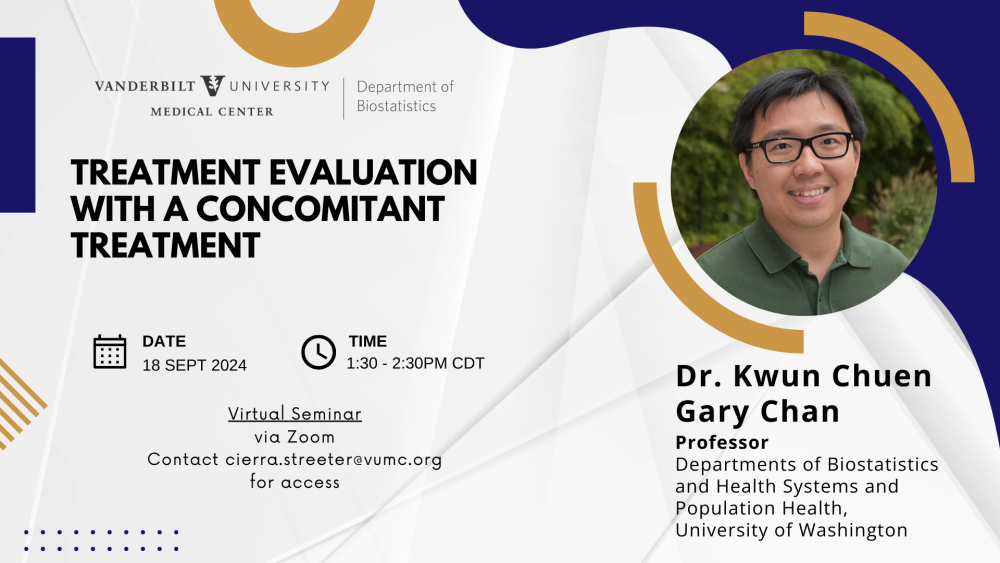
Abstract
Participants in pain trials often use analgesics for pain relief, but such concomitant treatments often dilute the intention-to-treat effect of the studied treatment. Under a structural model that allows unmeasured confounding between analgesic use and pain outcome, one can use treatment randomization to build instruments for estimating the controlled direct effect of the treatment, e.g. the treatment effect when analgesic use is absent. Estimation efficiency, however, can be low. We illustrate two ways for improving efficiencies: by building stronger instruments and residualizing a baseline potential outcome estimate. This is a joint work with Rui Wang, Patrick Heagerty, and Pradeep Suri.
Sign up to meet with Dr. Chan after the presentation here.
Gary Chan is a professor of biostatistics and health systems and population health at the University of Washington. His primary research interest is statistical methodology for observational studies. He is an elected fellow of the American Statistical Association and the Institute of Mathematical Statistics. He is a multiple PI of the Multi-ethnic Observational Study of American Asian and Pacific Islander Communities (MOSAAIC) Coordinating Center and an associate director of the National Alzheimer's Coordinating Center (NACC).